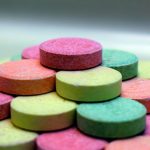
Canines are very much like humans. Like us, they can also have a fever, they can suffer from dehydration, and yes, they also sweat. But unlike us, they don’t sweat a lot. They have sweat glands yet they only perspire through the nose and paw pads. Given that, do dogs need Pedialyte for rehydration? Read this before you head out to the store for a supply of Pedialyte.
What is Pedialyte?
Pedialyte is an oral electrolyte solution intended to replenish important fluids, nutrients, and minerals when they are lost. It works by quickly replacing the lost bodily fluids to prevent dehydration. As stated on the product’s page, it contains a balanced amount of glucose and minerals with added sweetener to make it more inviting to those who need it.
In humans, Pedialyte is commonly given to children (hence the name) but it is actually recommended for adults as well. You may drink it after working out to replace the lost body fluids. Pedialyte can also replace electrolytes when you are suffering from bouts of diarrhea, the number one reason for dehydration.
But do canines really need electrolyte replacement as much as we do? The answer heavily depends on your dog’s situation. It’s not necessary to give Pedialyte after a physical activity or when your dog sweats. When dogs perspire, they only lose water and not electrolytes. It’s enough to give your pet water to keep him hydrated after a long walk out in the sun.
However, Pedialyte can be helpful when your dog is ill. According to the American Kennel Club, a dog’s body loses water and electrolytes when he suffers from fever, vomiting, diarrhea, and loss of appetite.
Can Dogs Have Pedialyte?
Yes, dogs can safely drink Pedialyte when they are sick. It is very safe for puppies and adult dogs. It can be given at home without a supervision of a vet, as long as it was given in appropriate amounts.
You can give Pedialyte to your dog when he is suffering from diarrhea and vomiting. The main use of Pedialyte is to restore the vitamins and minerals lost when your dog discharges and throws up frequently. Pedialyte will not heal vomiting and diarrhea but it can prevent the dehydration that usually comes with these conditions.
In some instances, Pedialyte can also be used in providing an electrolyte balance for canines with kidney disease. Canines with moderate to severe chronic kidney disease (CKD) are more prone to dehydration. Ask your vet if you can use Pedialyte along with your dog’s CKD medications.
Just an important reminder to pet owners – don’t make Pedialyte a regular part of your dog’s diet. It can provide an excessive amount of electrolytes, which your pet does not really need. The Urban Search and Rescue Veterinary Group stated that the additional electrolytes will only be eliminated through the kidneys.
How to Give Pedialyte to Dogs
Generally, Pedialyte is prepared by mixing one part of the solution to one part of water. It is advisable that your dog consumes it as soon as it was mixed because it might go bad if you leave it unconsumed for 48 hours.
It is not stated on the label, but it is true that any solution (even water) can be contaminated if you opened it and just leave it in the bottle for such a long time.
There are many variants of Pedialyte. The classic one is the ready-to-drink one that comes in flavored and unflavored versions. They also have the “Advanced Care” line which contains more electrolytes than the solution in the classic bottles.
You may consider this type of Pedialyte if your vet recommends it. But more often than not, dogs can get along just fine with the classic type.
You can simply mix it in your dog’s drinking bowl. If your fido does not like to drink it, consider giving it to him using a syringe without a needle.
Most vets recommend the unflavored type for dogs, although you can safely give flavored Pedialyte to your pet as well. Rehydrating a sick dog can be tricky, especially if your pooch refuses to drink water. Giving him flavored Pedialyte can be a solution to get him to drink.
Symptoms of Dehydration in Canines
Dehydration is a serious issue not just in humans but also in animals. In dogs, dehydration can cause organ failure and worse, death. Address these symptoms as soon as you notice them:
- Change of color in the gums – a dog’s gum is supposed to be pink. When you press it, it will turn white but only for a second. It should return to its pink color quickly. If the gum remains white for longer, it could be a sign of dehydration.
- Dryness of the gums – the texture of a canine’s gum is normally nice and moist. Most dogs also have slimy gums. If your pet’s gums have a dry and tacky feel, this could be a warning sign that your dog needs some hydration.
- Deeply recessed eyes – sunken eyes are another sign of dehydration in dogs. Take a closer look at your pet’s eyes and the surrounding area. It should not look like it was deprived of moisture.
- Dry nose – your dog’s nose can also be an indication of his severe dehydration. Since they only sweat through their noses, it’s normal for dogs to naturally have a moist nose.
- Loss of skin elasticity – check your dog’s skin elasticity by pulling up his skin right at the scruff of his neck. It should come back to its normal location fast. If it takes longer, this could be a sign that your dog needs more hydration.
The Pedialyte Dosage for Dogs
The recommended Pedialyte intake for dogs greatly depends on their body weight. You can give around 15 ml for every pound of your dog’s weight. As per the Ultimate Home Life, you can separate the dosage into three to four equal portions split throughout the day.
For small dogs, it would not hurt to give around 1/8 cup of Pedialyte every hour. When it comes to larger dogs, ¼ cup of Pedialyte is a safe quantity.
Homemade Pedialyte for Dogs
A liter of Pedialyte costs around $5. If you think this is quite costly or you simply ran out of Pedialyte, you can actually make your own Pedialyte for Fido.
To make your homemade Pedialyte solution, simply dissolve 1/2 teaspoon of salt and 2 tbsp sugar in 4 cups of previously boiled water. That’s it! Actually, it’s much better if you use light salt, which is a combination of salt and potassium chloride. If you want to add some flavor, you can try adding a little bit of juice.
Conclusion
Pedialyte is safe for dogs. Just give it in reasonable amounts when your dog needs it, like when he is sick due to diarrhea and vomiting. You don’t need to give Pedialyte to your dog after a long walk or when he sweats. In such cases, water is enough to keep your pet hydrated.





















